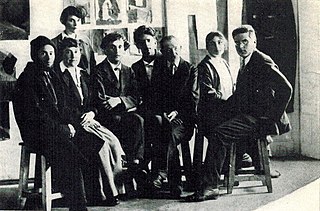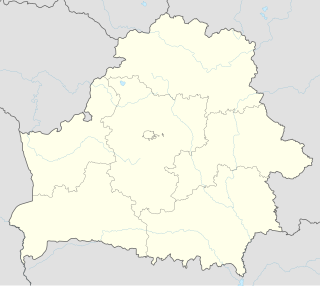 W
WThe architecture of Belarus spans a variety of historical periods and styles and reflects the complex history, geography, religion and identity of the country. Several buildings in Belarus have been designated as UNESCO World Heritage Sites in recognition of their cultural heritage, and others have been placed on the tentative list.
 W
WDziady is a term in Slavic folklore for the spirits of the ancestors and a collection of pre-Christian rites, rituals and customs that were dedicated to them. The essence of these rituals was the "communion of the living with the dead", namely, the establishment of relationships with the souls of the ancestors, periodically returning to their headquarters from the times of their lives. The aim of the ritual activities was to win the favor of the deceased, who were considered to be caretakers in the sphere of fertility. The name "dziady" was used in particular dialects mainly in Belarus, Polesia, Russia and Ukraine, but under different other names there were very similar ritual practices, common among Slavs and Balts, and also in many European and even non-European cultures.
 W
WVera Ermolaeva was a Russian painter, graphic artist and illustrator who participated in the Russian avant-garde movement.
 W
WFrancis Skaryna Belarusian Library and Museum in London, England, is the only library outside Belarus to collect exclusively in the field of Belarusian studies and its collection is the most comprehensive in this field in Western Europe. The library is an independent institution owned by a charitable trust. It is located at 37 Holden Road, North Finchley, London. The library is named after Francysk Skaryna, a Belarusian and East-Slavonic publishing pioneer.
 W
WIndependence Day of the Republic of Belarus, also known as Republic Day or Liberation Day is a public holiday, the independence day of Belarus and is celebrated each year on 3 July. Independence Day is a non-working day.
 W
WThe horovod or khorovod is an East Slavic and pagan art form and one of the oldest dances of Russia with its more than 1000 years history. It is a combination of a circle dance and chorus singing, similar to the choreia of ancient Greece. The dance was also known in Russia as karagod, tanok and krug.
 W
WThe United Nations Educational, Scientific and Cultural Organization (UNESCO) World Heritage Sites are places of importance to cultural or natural heritage as described in the UNESCO World Heritage Convention, established in 1972. Belarus accepted the convention on 12 October 1988, making its natural and historical sites eligible for inclusion on the list. As of 2020, there are four World Heritage Sites in Belarus. The first site in Belarus added to the list was the Białowieża Forest in 1992, representing an extension to the site previously listed in Poland in 1979. This is the only natural site in Belarus, the other three are cultural. In addition to Białowieża Forest, the Struve Geodetic Arc is also a transnational site, and is shared with nine other countries. As of 2020, Belarus has five sites listed on the tentative list, all were added in 2004.
 W
WFrancysk Skaryna was a Ruthenian humanist, physician, and translator. He is known to be one of the first book printers in the Grand Duchy of Lithuania and in all of Eastern Europe, laying the groundwork for the development of the Belarusian izvod of the Church Slavonic language.
 W
WA skomorokh was a medieval East Slavic harlequin, or actor, who could also sing, dance, play musical instruments and compose for oral/musical and dramatic performances. The etymology of the word is not completely clear. There are hypotheses that the word is derived from the Greek σκώμμαρχος ; from the Italian scaramuccia ; from the Arabic masẋara; and many others.
 W
WVechornytsi are Slavic traditional gatherings with music, songs, jokes and rituals. Vechornytsi traditionally began in late September after the seasonal agricultural work was over. Young people from villages gathered in the evenings for entertainment. There were everyday and festive vechornytsi. During everyday parties people created folk art objects like rushnyky, while entertaining themselves by singing songs or telling jokes. During festive vechornytsi rich dinners were cooked, and there was music and dancing. It was the ladies' responsibility to cook a dinner and the men's responsibility to provide everybody with music, drinks, and sweets.